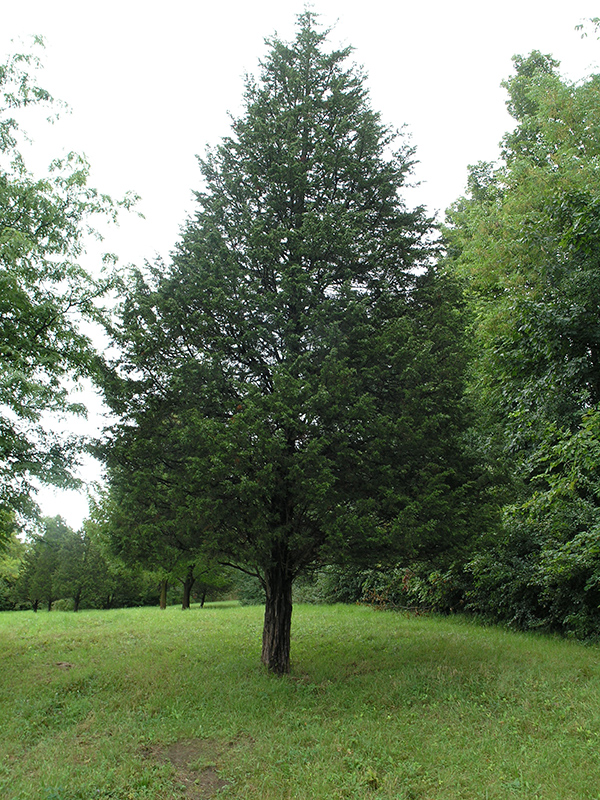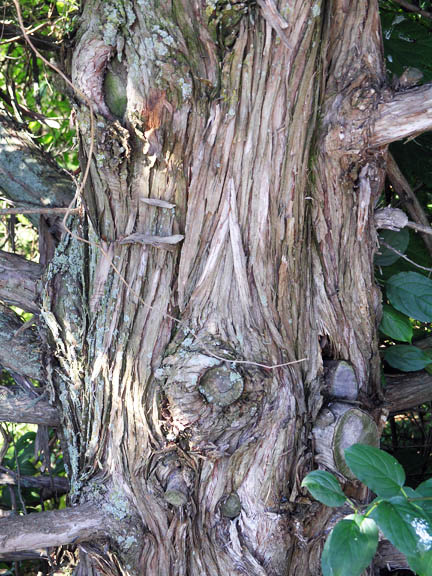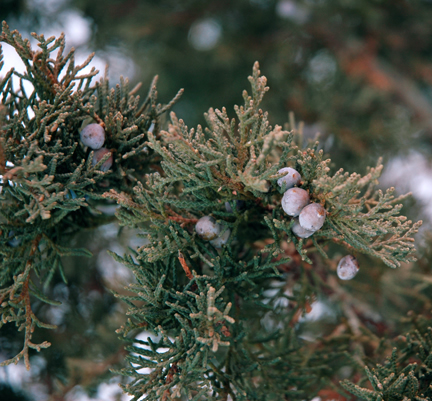
Woody > Juniperus > Juniperus virginiana > Juniperus virginiana
Juniperus virginiana
Eastern Red Cedar
Origin: North America into east of the Rocky Mountains. Introduced to North America cultivation around 1664. The fragrant wood is used to make chests, closet hangers and liners, carvings and other wood products.
Mike's
Opinion


"
As a species, it has no place in the cultivated landscape except in natural restorations. Many of its cultivars are very nice though.
Michael Pascoe, NDP., ODH., CLT., MSc. (Plant Conservation)
"
| Family |
| Cupressaceae |
| Genus |
| Juniperus |
| Species |
| virginiana |
| Category |
| Woody |
| Type |
| Tree (evergreen) |
| Pronunciation |
| USDA Hardiness Zone |
| 2-9 |
| Canadian Hardiness Zone |
| 0a |
| RHS Hardiness Zone |
| H7 - H3 |
| Temperature (°C) |
| (-43) - (-1) |
| Temperature (°F) |
| (-45) - 30 |
| Height |
| 15 m |
| Spread |
| 3-7 m |
Photographs
Description and Growing Information
Flowering Period
| General Description |
| Will survive almost anywhere. Typically seen growing in ditches and under power lines where they were seeded by birds. It has moderate salt tolerance. |
| Landscape |
| Not a valuable landscape plant. Suitable for screens and windbreaks. Also useful in naturalization projects. It will grow well where many other plants cannot survive. |
| Cultivation |
| Tolerates very poor site conditions including gravelly soil with high pH values. Prefers full sun, but will tolerate shade when young. |
| Shape |
| Columnar to broadly pyramidal. |
| Growth |
| Medium |
| ID Characteristic |
| Juvenile leaves are in pairs. Also has very distinct cedar odour as well as a very bitter taste. |
| Pests |
| Commonly affected by cedar apple rust, causing large globose galls with telia emerging in spring. Also affected by juniper bloom rust and bagworms. |
| Habitat |
| Dry upland area, often on loose scree. |
| Bark/Stem Description |
| Grey-brown to red-brown, exfoliating in strips. |
| Leaf Description |
| Awl-like juvenile leaves, in pairs, about 5mm long. Adult leaves are scale-like and arranged in 4 ranks, pressed close to the stem. |
| Flower Description |
| It is a dioecious species. Male specimens form small yellow cones which release large amounts of pollen. These cones can persist through most of the season. |
| Fruit Description |
| Small green cones, about 75mm in diameter with a heavy bloom. They are round to ovoid in shape. |
| Colour Description |
| The colour is somewhat variable but is rich green in summer, turning to brownish-purplish green in winter. |
| Texture Description |
| Medium. |
| Notable Specimens |
| Common throughout Ontario but especially on the 401 highway corridor close to Windsor. |
| Propagation |
| From seed, treat with citric acid for 96 hours, then warm stratification for 6 weeks and cold stratification for an additional 10 weeks. It may also be easily rooted from cuttings. |







